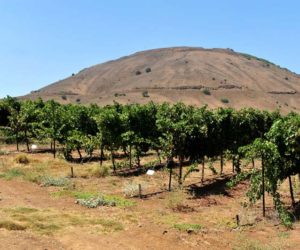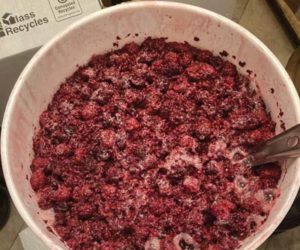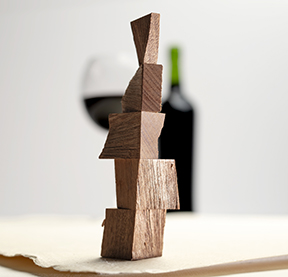
In the realm of winemaking, tradition often dictates the use of oak for aging and imparting flavors. Over the course of several years of home winemaking, I, like many others, have used oak in various forms including barrels, chips, and spirals. Though in ancient times, palm wood was used to transport wine, and later chestnut, pine, redwood, and black locust wood have been used in crafting winemaking vessels. Still, the predominant wood is oak, with continuous use for over 2,000 years.
As a woodworker, I have had the pleasure of working with many standard hardwoods. One of my favorite varieties is mahogany, known for its delightful scent. I am lucky to have a significant quantity of high-grade Honduran mahogany, in small blocks, in my wood shop. Inspired by the historical use of Cuban rum aged in mahogany barrels, I decided to embark on an uncharted path to determine what influence mahogany may have in place of oak on my homemade wines. With my 2021 purchase of some beautiful Cabernet Sauvignon grapes from Johnson Vineyards in Lockwood, California, my new adventure began.
The endeavor began with a modest experiment in which I treated a small batch of Cabernet Sauvignon separately with oak and mahogany. Eight weeks later, at a Sunday dinner, my wine connoisseur family — Mary (wife), Michael & Stephanie (son and daughter-in-law), and Gelena (daughter) — was subjected to the blind tasting. The consensus was surprising yet undeniable, with unanimous praise for the mahogany-treated wine. Reasons cited smoother tannins and an alluring finish.
Brimming with excitement, I knew I had to embark on a grander, more scientific expedition to determine the optimal amount of time and quantity of mahogany cubes for the best taste. In September 2022 I procured more Cabernet Sauvignon grapes from the same vineyard, gearing up for the ultimate mahogany vs. oak showdown!
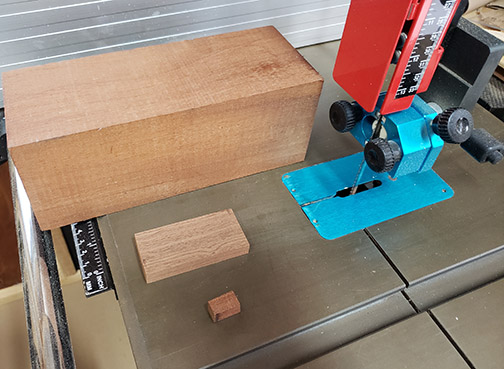
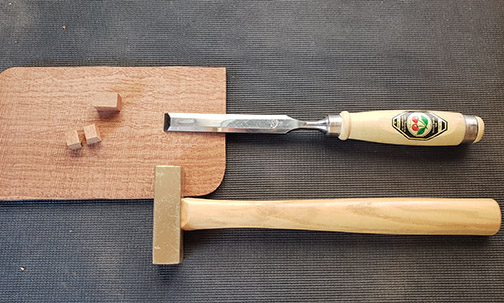
The American oak medium-toast package of chips I would use for the oak addition suggests 3 oz. per 6 gallons of wine (85 g/23 L) for new oak characteristics, which converts to approximately 1.3 g per 375-mL bottle, which is what I decided to use as the control. I decided to use the same weight per bottle of mahogany, but also test samples with more and less mahogany to get a better idea of the impact mahogany would have at various addition rates. For those samples I went with 60% of the suggested oak weight (0.78 g mahogany) and 150% (or 1.95 g). Recognizing the surface area of the wood is a factor as well and keeping the application consistent, I used only 1 mahogany chip per bottle. For a legitimate taste comparison, the various mahogany samples would have to be tested against the American oak chips at the standard range of strength. Though the American oak was toasted to a medium level, I went au naturel with the mahogany as this would add too many variations to the test, and the scent of natural mahogany is already appealing with a rich earthy, sweet, and slightly spicy aroma.
Another variation to consider was the length of time for the chips to be in the wine. Many of the oak chip packages I’ve seen have a recommended range from 4–8 weeks, so to be sure all samples were ready in the same week for tasting, I bottled four wines every two weeks for three weeks (one with oak at 1.3 g, and one each with a single mahogany cube weighing 0.78 g, 1.3 g and 1.95 g). This would result in four bottles at four weeks aging time, four bottles at six weeks aging, and four bottles at eight weeks aging.
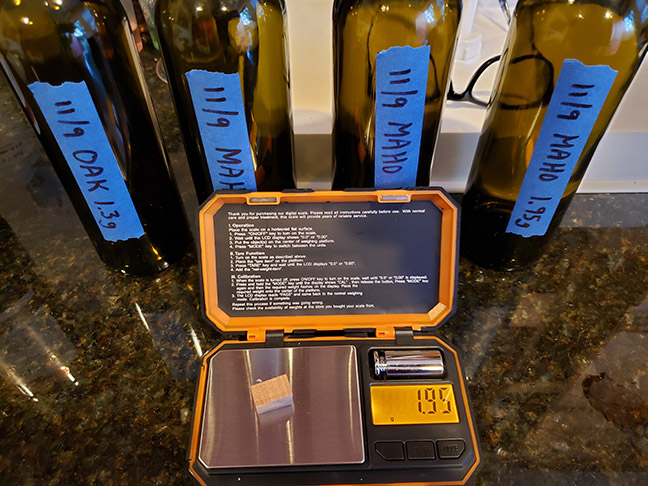
The experiment culminated in a taste test in the first week of December 2022. In addition, we also had one 375-mL bottle of Cabernet Sauvignon that had no oak or mahogany for further comparison.
As the anticipation grew, I invited seasoned wine experts for the tasting. In addition to my family, we had Steve (co-winemaker) and Lynne Doyle, our friends Jeff and Peggy Fischbeck, Keith Rolle (owner of Gianni Buonomo’s Winery in Ocean Beach, California), and Al Dorvinen (General Manager at Gianni Buonomo’s).
We prepared appetizers and food to complement the wine, premade taste testing forms for everyone to fill out with a scoring of 1–5 (high), and space for tasting notes. This was an overall score of the various factors i.e., body, tannin, acidity, aroma, mouthfeel, taste, finish, etc. The tasters swirled, sniffed, and savored the 13 variations of oak and mahogany flavors. This was conducted as a blind taste test with no indication of which wine they were sampling.
And the Winner Was . . .
The 8-week, 1.95 g mahogany-treated wine! The smooth, velvety notes of mahogany had won hearts and palates, reigning supreme over its oak competitors. In fact, three of the top four scoring wines were mahogany, and interestingly all of the top four were those that had been treated a full eight weeks.

The remaining bottles that had been aged on wood for 4 and 6 weeks were all mixed in scores ranging from 3.28–3.67. As you can see in the scores, there was quite a variance from the top wine and the next three favorites that all scored between 0.02 of each other.
However, I wasn’t done yet! A brilliant thought struck me the next day — what if we blend the winning mahogany with the top scoring oaked wine? A smaller group gathered, ready to witness the magic of blending in action. We experimented with 100% mahogany, 75/25, 50/50, and 25/75 — all vying for the ultimate blend title. The verdict? Mahogany still shone the brightest, claiming the top spot even when paired with oak! But the 50/50 blend proved to be a formidable runner-up; a harmonious marriage of both worlds, oak and mahogany dancing gracefully on the taste buds.
I subsequently extended an invitation to a select group of local wine judges and connoisseurs around the San Diego, California, area (Roger Storer, Gisela and Arne Claassen, and Robert and Lorena Gaughen) who offered specific tasting notes. Additionally, at a separate San Diego American Wine Society event, I was fortunate to have more expert tasters (Brad Bruce and Stephen Chappell) contribute their insightful tasting notes to the endeavor. In these tastings, I offered a choice of the 100% Honduran mahogany and a 100% American oak.

In consolidating their collective observations, the mahogany-flavored wine exhibited a bouquet characterized by concentrated red fruit aromas, vibrant cherry notes intertwined with chocolate nuances, a subdued acidity, closed fruit, and a subtle hint of floral and sage undertones. On the palate, it revealed a splendid structure, floral notes, an openness in flavor profile, encompassing dark fruits, currants, a subtle bell pepper element, a sweetness reminiscent of berry notes, and a profound presence of deep red fruits, complemented by a tantalizing hint of spice and graceful acidity.
In stark contrast to its oak-aged counterpart, the mahogany-aged wine presented itself as more mature, offering a lighter aromatic profile on the nose, smoother tannins, and a softer, lingering finish. Unanimously, our panel concurred that the Cabernet Sauvignon with Honduran mahogany would be an exquisite accompaniment to a barbecue or a succulent steak, leaving us all eagerly anticipating the wine’s continued evolution through the aging process.
With the results in, I used 10.5 oz. mahogany for my 15-gallon batch (300 g/57-L), then transferred and stored the wine in a stainless steel beer keg for long-term storage. I’m excited to continue experimenting to refine this process. I’m already looking forward to another tasting of this wine in a couple of years so we can judge the test of time.
The outcome of this odyssey sheds light on the unexplored influence of mahogany in winemaking. While oak remains a timeless classic, the allure of mahogany has unveiled a new avenue for adventurous winemakers to explore.
This extraordinary journey serves as a testament to the boundless possibilities and unending evolution of the ancient art of winemaking.



